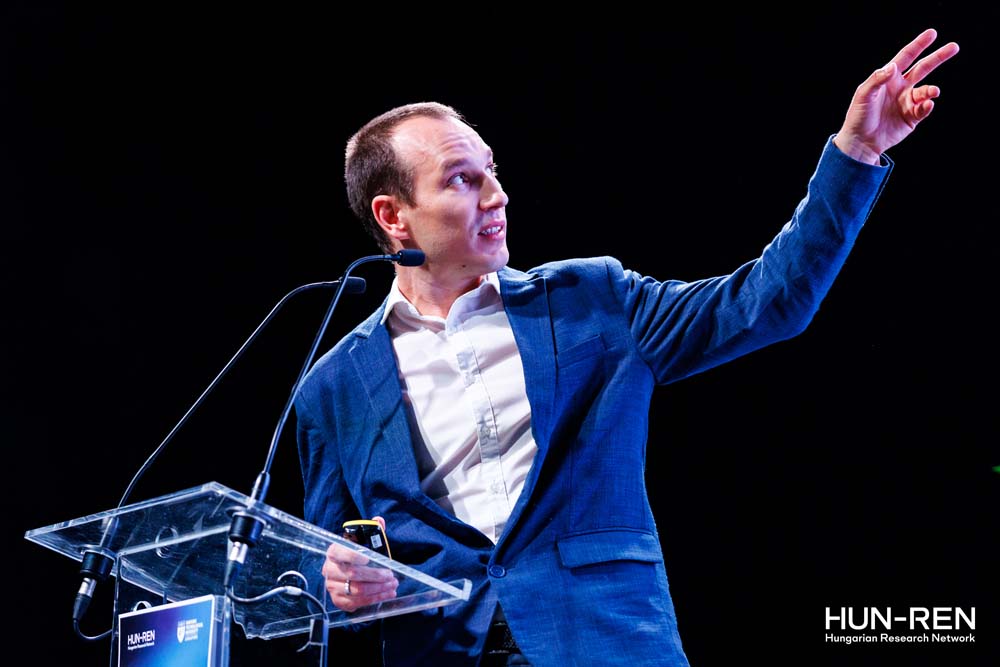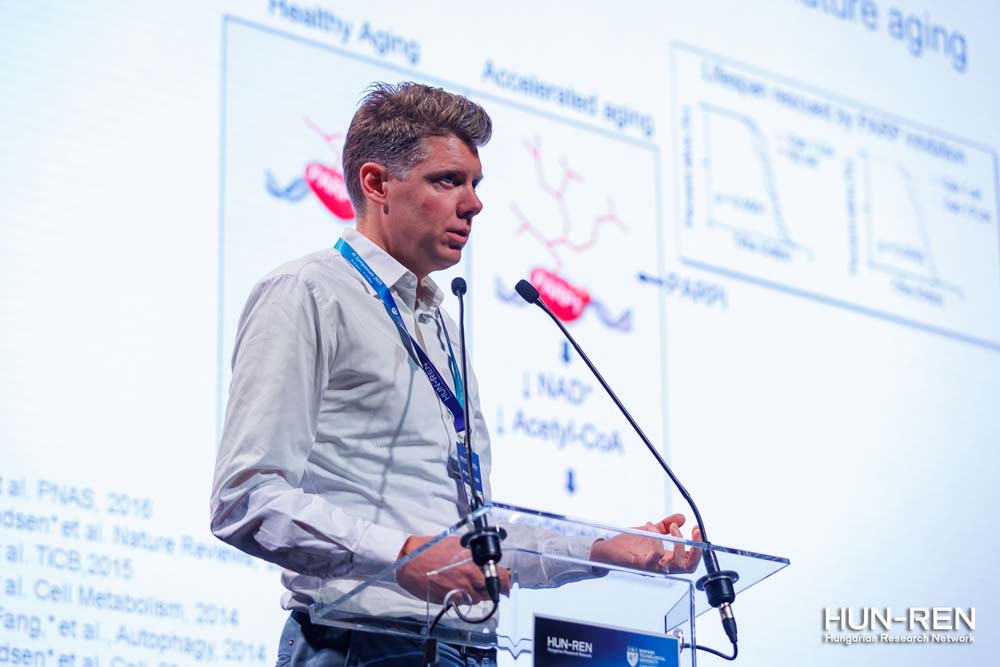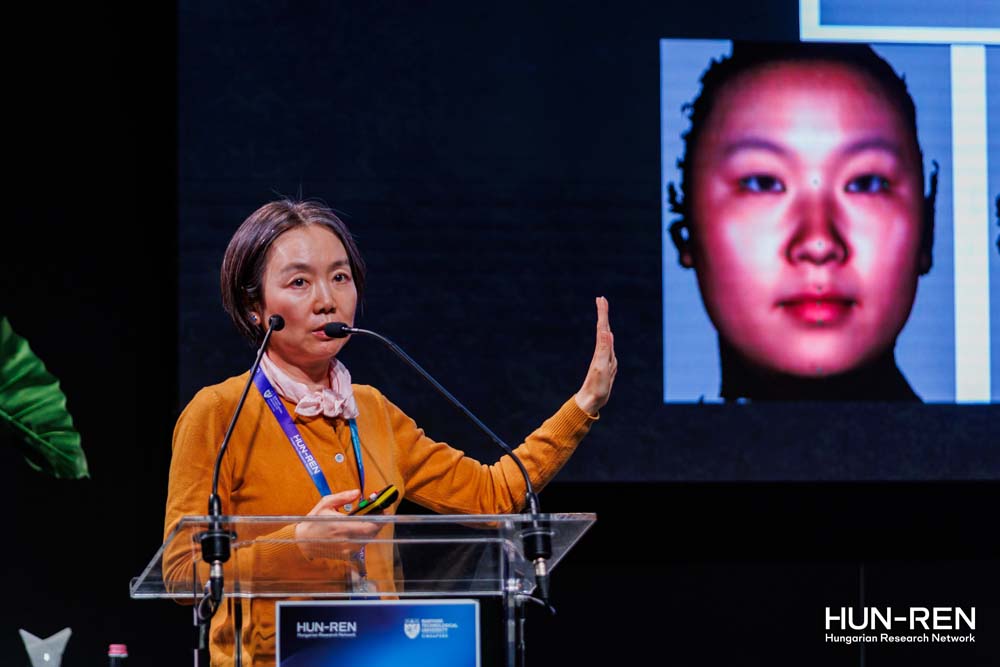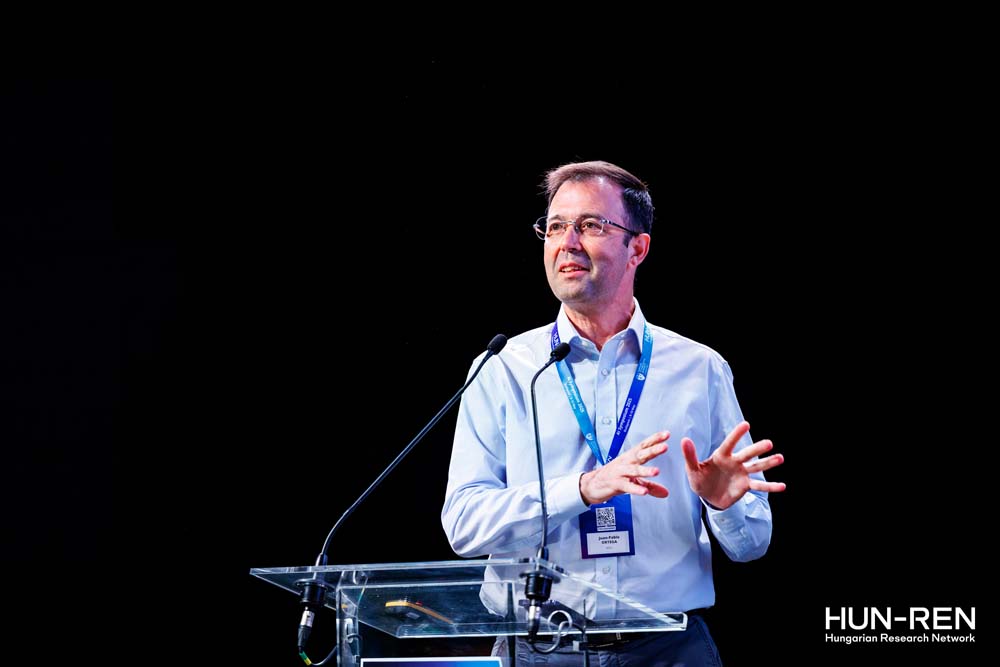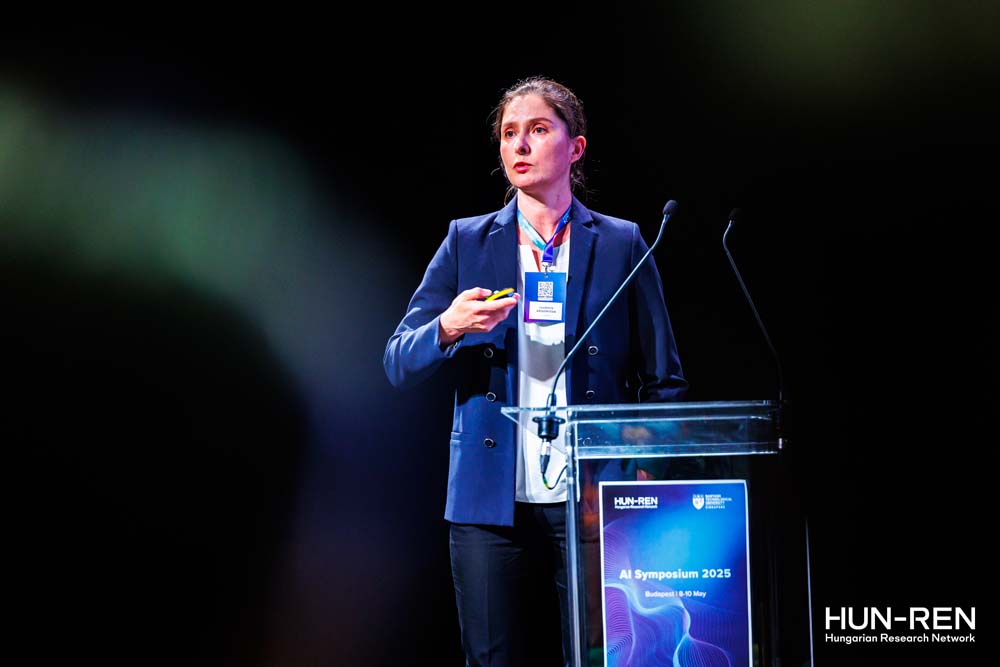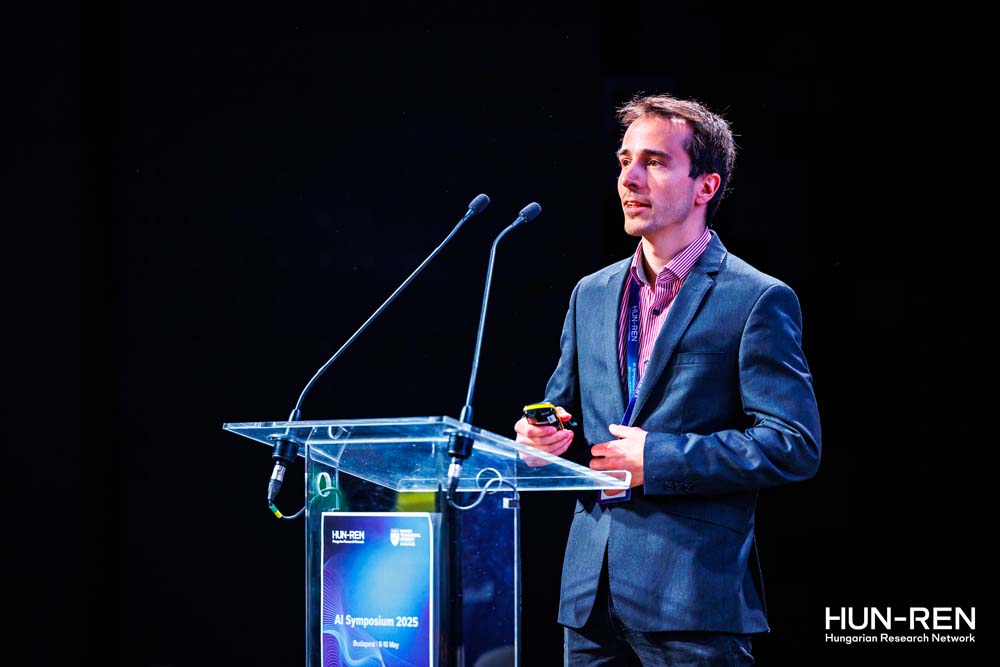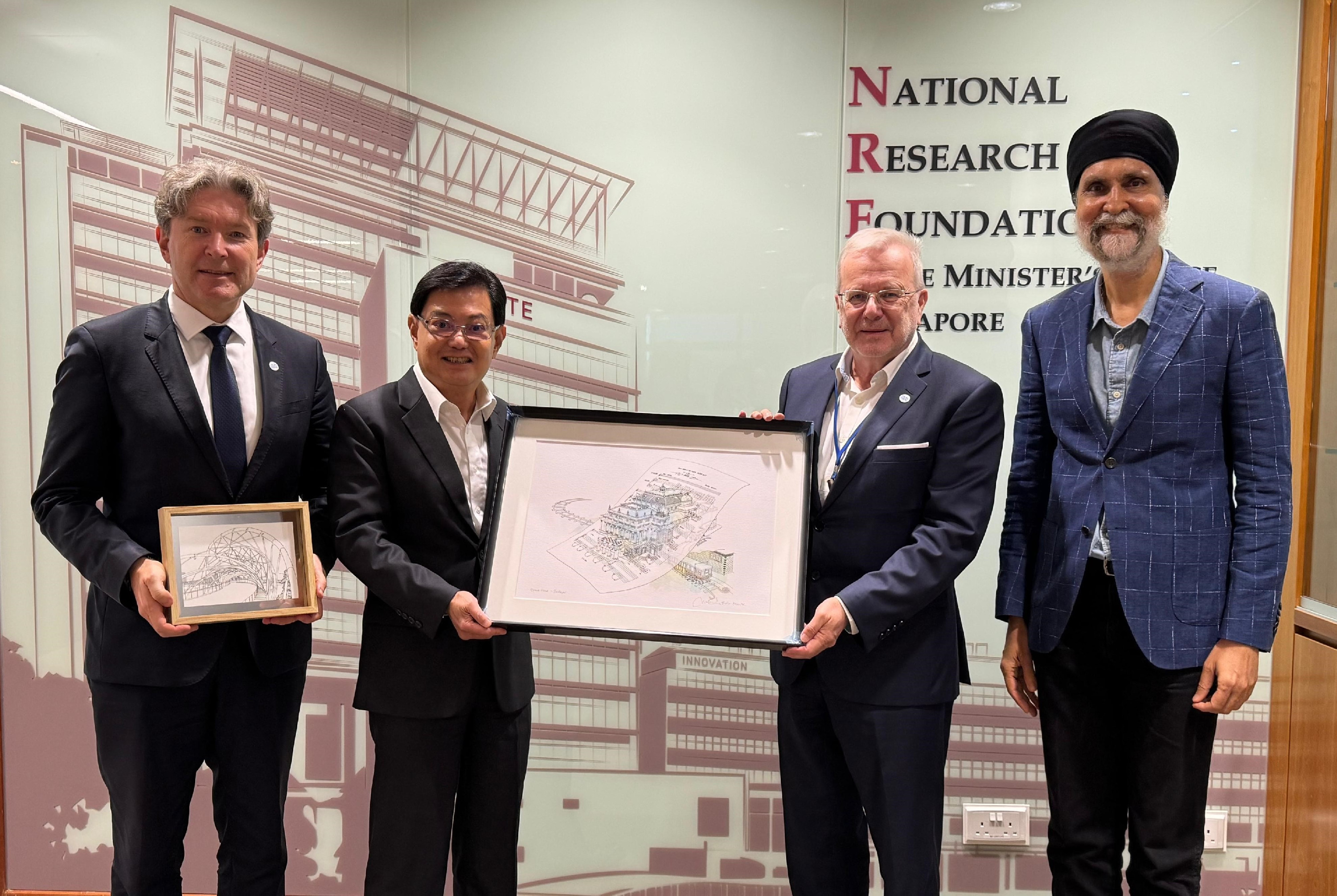AI Symposium 2025 – Final Day in Brief
HUN-REN will henceforth invite the leading minds in artificial intelligence to an annual gathering for shared reflection and exchange, CEO Roland Jakab announced in his closing remarks at the end of the three-day event. This year’s symposium brought together more than a thousand participants to discuss the present and future of AI.
The final day of AI Symposium 2025, jointly organised by the HUN-REN Hungarian Research Network and Nanyang Technological University (NTU), Singapore, focused on medical applications of artificial intelligence. Among the morning’s keynote speakers were Guan Cuntai, Professor at the School of Computer Science and Engineering at NTU, and world-renowned network scientist Albert-László Barabási. Both addressed the use of AI in supporting healthcare activities.
In his presentation, Guan Cuntai discussed the wide-ranging medical rehabilitation applications of brain–computer interfaces (BCIs), with particular emphasis on non-invasive, EEG-based deep learning approaches. He not only introduced the audience to movement-related use cases, but also offered insights into how BCIs can be applied in cognitive training for children with ADHD and older adults experiencing cognitive decline—improving attention and neural connectivity. He also described how EEG can be used for speech decoding by identifying meaningful neural patterns, which may benefit patients with speech disorders or impaired consciousness. The NTU professor went on to report on the development of emotion regulation tools, adding that their long-term goal is to develop a cost-effective, AI-based mental health intervention that operates without the need for human therapists.
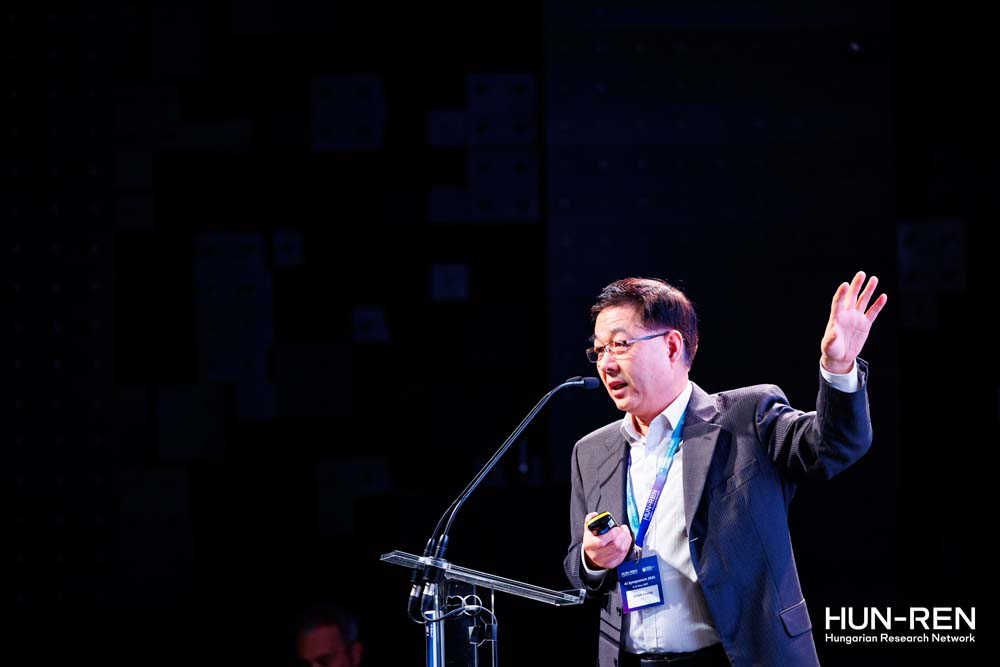
Guan Cuntai
Photo: BENCE FEJES
The star speaker of the symposium’s final day was Albert-László Barabási, whose pioneering work—including in the field of network medicine—offers new insights into the links between disease and health. The aim of network medicine is to map the interactions between proteins within cells, known as “disease modules”, to help us understand how a particular disease may be directly linked to other diseases or symptoms. Professor Barabási emphasised that artificial intelligence and large language models are playing an increasingly important role in this field. These tools can estimate the strength of interactions between protein molecules, helping to identify new networks involved in the development of disease.
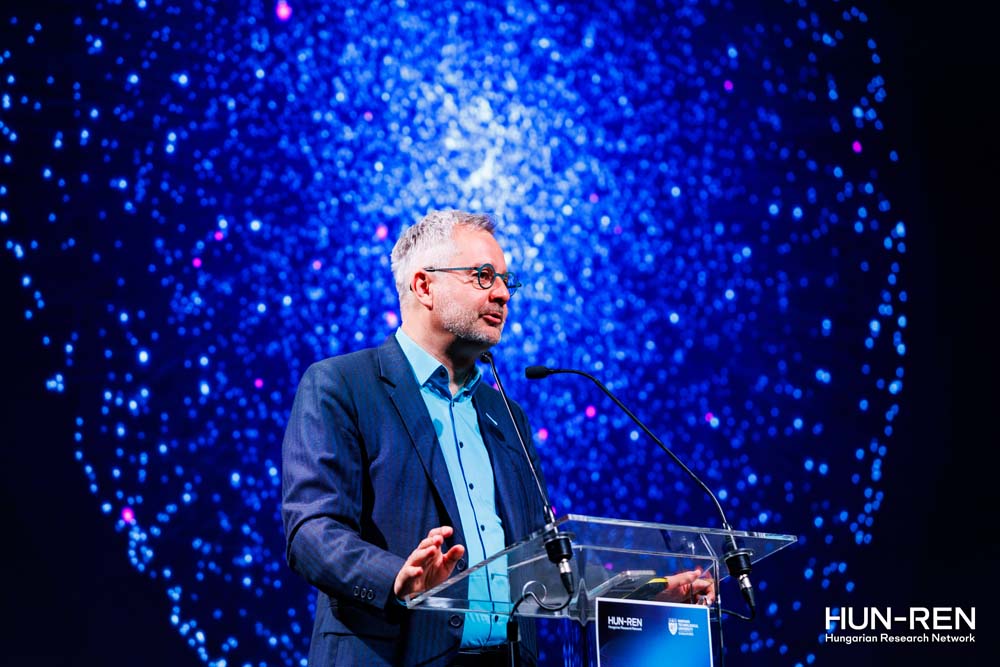
Albert-László Barabási
Photo: Marton Nagy
In addition to the genetic factors underlying network medicine, Albert-László Barabási highlighted the role of environmental influences—particularly diet—in the development and progression of disease. The Barabási Lab’s FOODOME project is investigating the biochemical compounds in the food we eat, many of which are still poorly understood. “It is unacceptable that we have no idea what we are putting into our bodies through our diet,” the professor warned. Researchers in the project are using network theory, artificial intelligence and machine learning to map the composition of our food and explore how these compounds affect the human body. According to Barabási, the effects of each food compound on the human organism can be described as a network and compared to the biological networks associated with disease.
One of the morning’s thematic sessions—moderated by James Cole, who also spoke earlier in the symposium—brought together Morten Scheibye-Knudsen, senior researcher at the University of Copenhagen; Jing-Dong Jackie Han, professor at Peking University; Péter Horváth, Institute Director at the HUN-REN Biological Research Centre in Szeged; and Csaba Kerepesi, head of the BioAgeAI research group at the HUN-REN Institute for Computer Science and Control (HUN-REN SZTAKI). The panel discussed the latest findings in ageing research and cell analysis. Csaba Kerepesi spoke about the use of AI-based photo analysis to determine a person’s age and assess associated disease risks. Their method also enables the evaluation of treatments aimed at slowing or even reversing the ageing process.
In the parallel session, speakers Juan Pablo Ortega, Associate Chair (Faculty) and Professor at the School of Physical and Mathematical Sciences, Division of Mathematical Sciences, NTU; Atsushi Nitanda, Principal Scientist at the Centre for Frontier AI Research (CFAR) and the Institute of High Performance Computing (IHPC), A*STAR; Lyudmila Grigoryeva, Associate Professor in the Department of Quantitative Economics at the Faculty of Mathematics and Statistics, University of St. Gallen; and Adam Wagner, researcher at Google DeepMind, presented new theoretical foundations and emerging directions in machine learning.
The session opened with a focus on learning dynamic processes, particularly their mathematical challenges. The speakers introduced reservoir computing, a powerful tool for modelling time-dependent systems, along with its kernelised variants. The talks highlighted the differences between dynamic and static learning tasks and explored how machine learning can be used to discover novel and interesting mathematical objects and constructions. They also discussed the development of tools that enable mathematicians themselves to uncover such structures. Finally, the session covered the theory and practical applications of distribution optimisation, with special attention to its relevance for sustainable machine learning.
The closing keynote of the event was delivered by internationally renowned mathematician Yurii Nesterov, Professor Emeritus at Corvinus University of Budapest. In his presentation, he spoke about the everyday and scientific applications of optimisation principles, demonstrating that the principle of minimum energy is a fundamental tool not only in physics and economics, but also in understanding natural and social processes. “If we know the end goal of a process, its characteristics become easier to predict,” the mathematician explained. Striving for accessibility, he made an effort to simplify complex mathematical theories. In one example, he pointed out that everyday forms of movement—such as walking, running or driving—can also be described through optimisation frameworks.
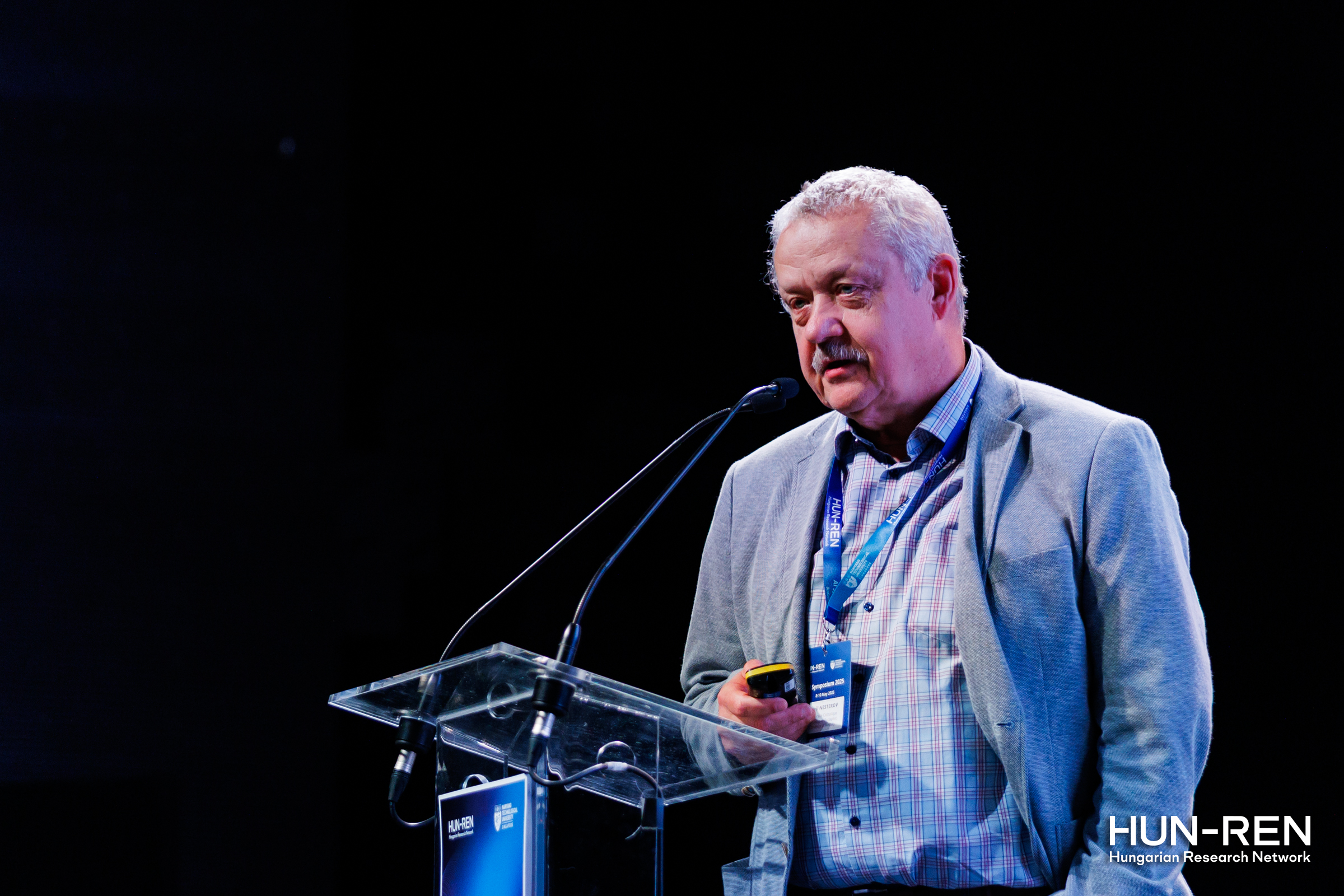
Yurii Nesterov
Photo: Marton Nagy
“AI is developing at an exponential pace and is truly bringing together researchers from across disciplines,” said Balázs Gulyás, President of HUN-REN, in his closing address. He emphasised that AI has undergone an extraordinarily rapid evolution over the past 69 years—something clearly reflected in the presentations and discussions of the three-day AI Symposium 2025. He highlighted the active participation of international guests and the value of the knowledge shared, and expressed his pleasure that the symposium had reached a consensus: AI must be taken seriously and more deeply understood—for the benefit of humanity.
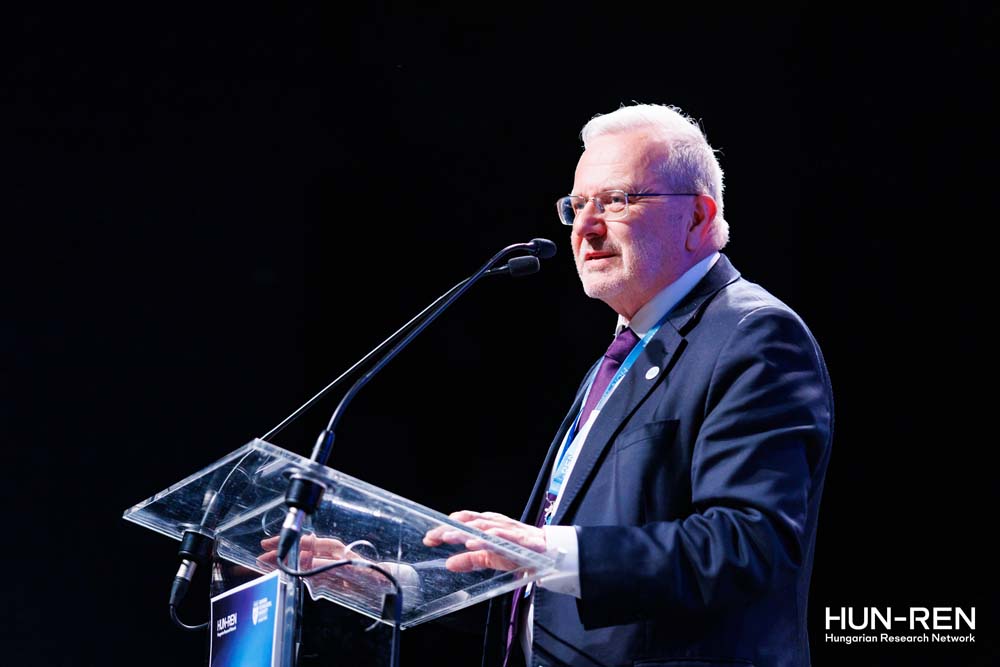
Balázs Gulyás
Photo: Marton Nagy
Seizing the moment, the President announced that from 17 to 19 September, HUN-REN will host another symposium in Budapest, this time focusing on Healthy Living, with artificial intelligence applications again playing a central role.
Professor Luke Ong, Vice President and Dean at co-organising partner NTU Singapore, spoke about the importance of sharing research results and expressed his hope that the professional connections forged during the symposium will soon grow into concrete collaborations.
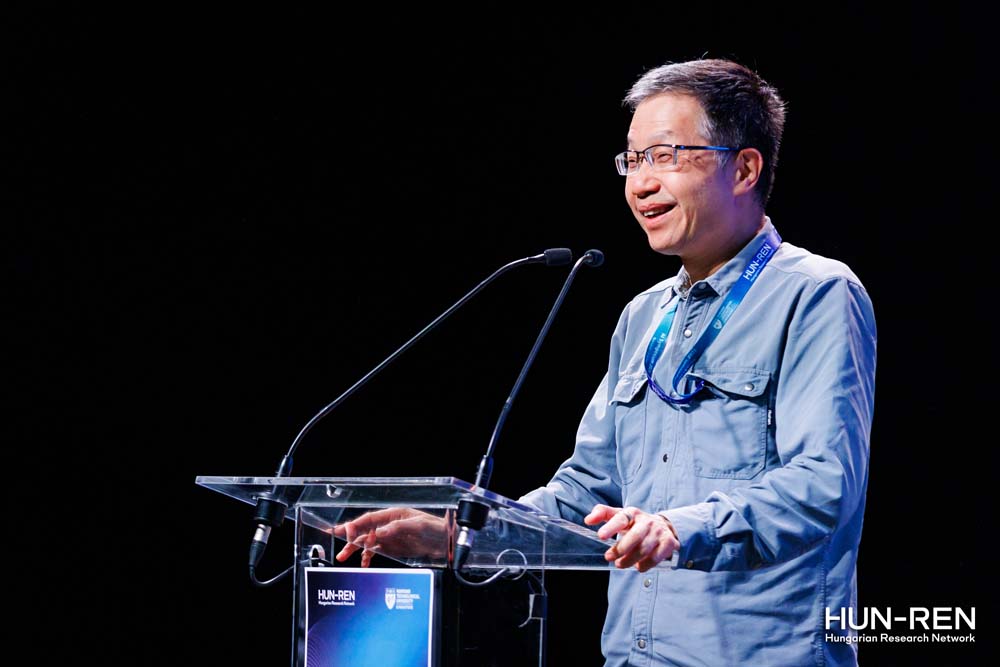
Luke Ong
Photo: Marton Nagy
Roland Jakab, CEO of HUN-REN, spoke about HUNRENTECH, the newly established technology transfer company within the research network. Its mission is to promote the practical application of research results—building a bridge between science and industry, with a special focus on ensuring that the outcomes of R&D can be translated into benefits for the industrial sector.
In his closing remarks, he noted that more than a thousand people attended the symposium in person, reflecting the considerable interest in Hungarian and international developments in artificial intelligence. The event brought together experts from academia, industry and public administration to explore the opportunities of AI deployment. The past three days were marked by genuine knowledge exchange and dialogue, and several potential partnerships also emerged. “Our goal is to channel these knowledge-based partnerships for the benefit of Hungary—and to harness AI in ways that generate social and economic value for the many, not just the few,” Roland Jakab emphasised.
He also recalled that HUN-REN has signed a strategic agreement with the Budapest University of Technology and Economics (BME) to further strengthen ties between university research, industry, and applied innovation. He added that this partnership will play a key role in ensuring that AI development is grounded in science and shaped with the involvement of young people.
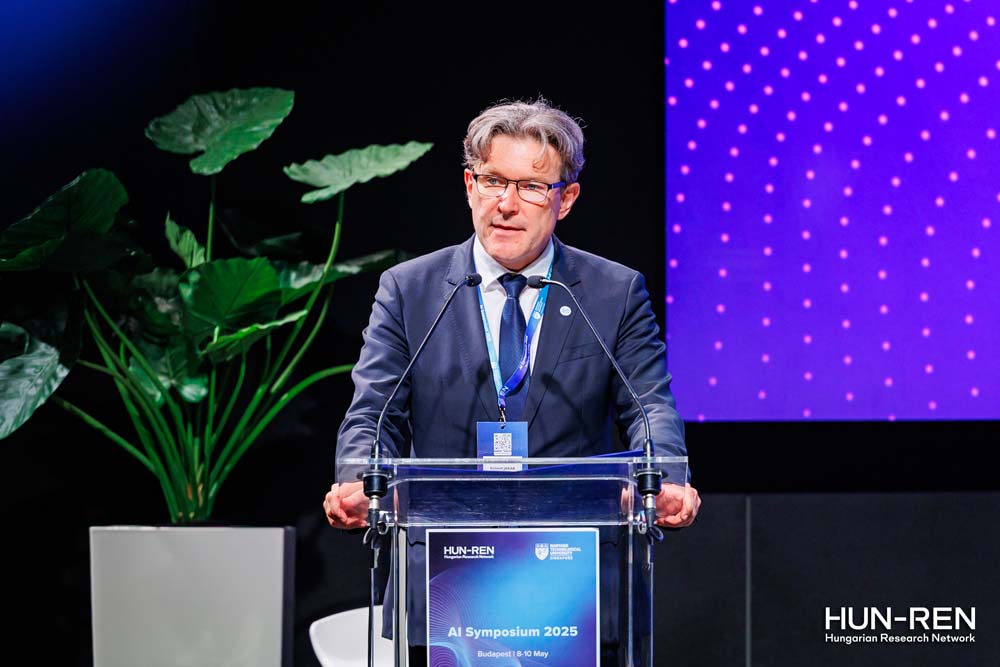
Roland Jakab
Photo: BENCE FEJES
Roland Jakab also announced that, in response to the high level of interest and the overwhelmingly positive feedback, HUN-REN has decided to make the AI Symposium an annual event. This means that Budapest will continue to serve as host to one of the most significant international gatherings in AI development in the years ahead. This year’s symposium marks not only a milestone but also a new beginning—launching a shared journey toward a smarter, fairer, and more competitive future in which Hungary can play a defining role, Roland Jakab emphasised.
